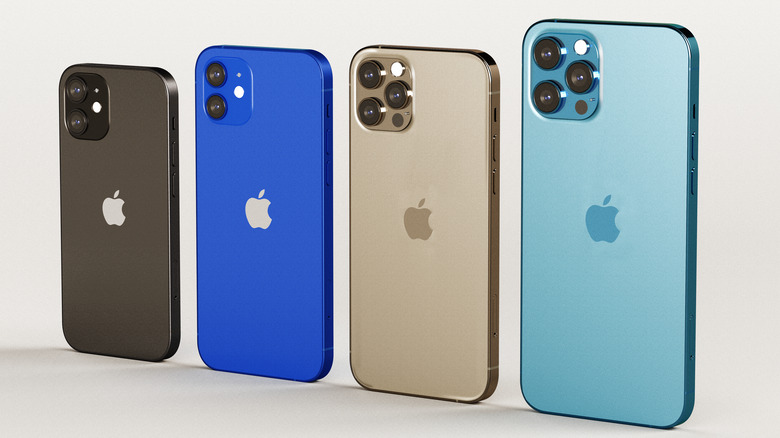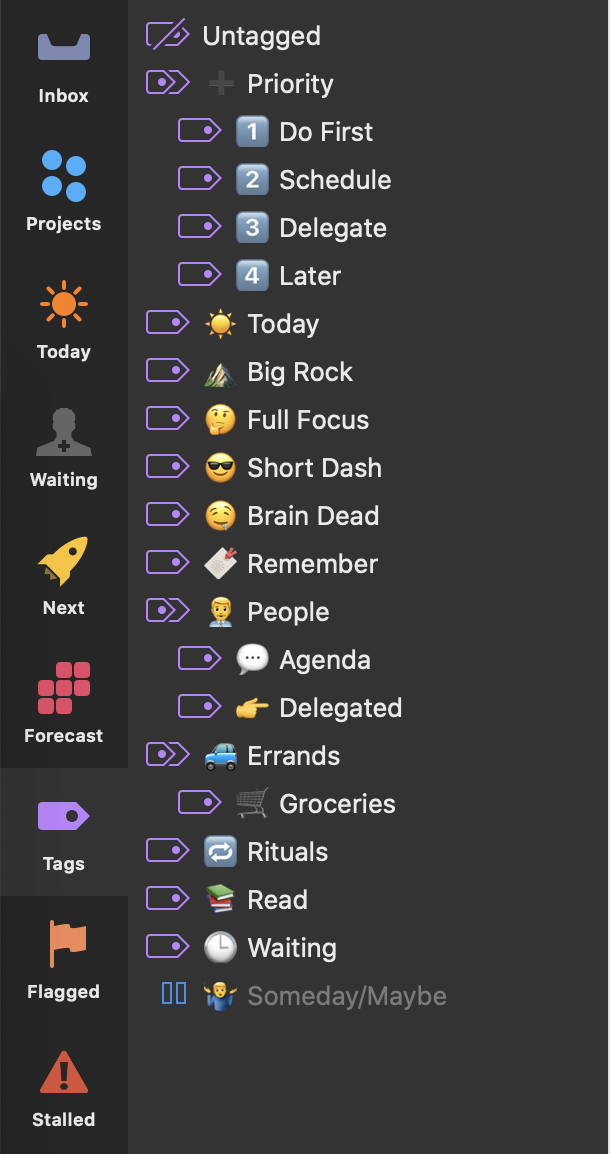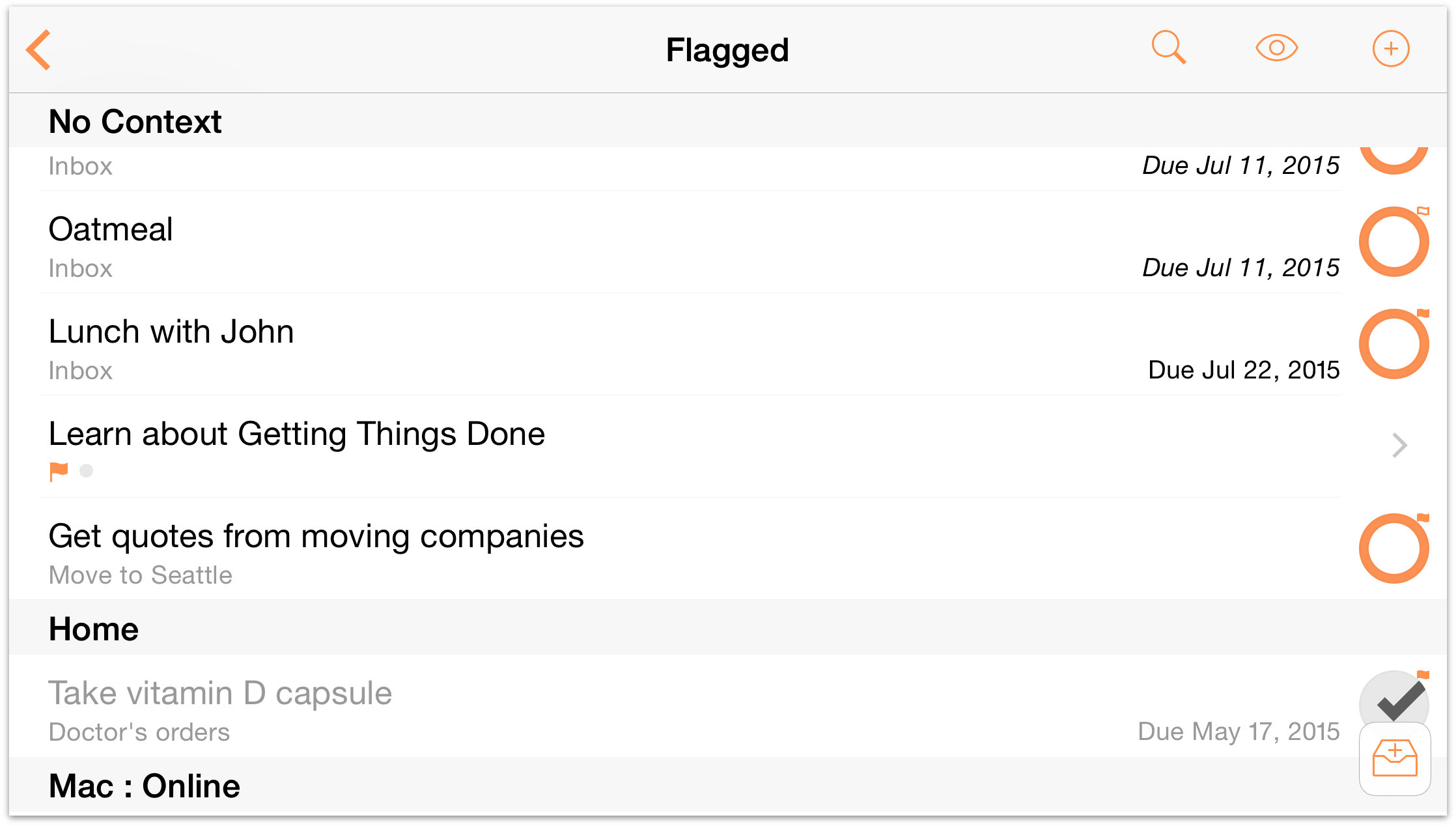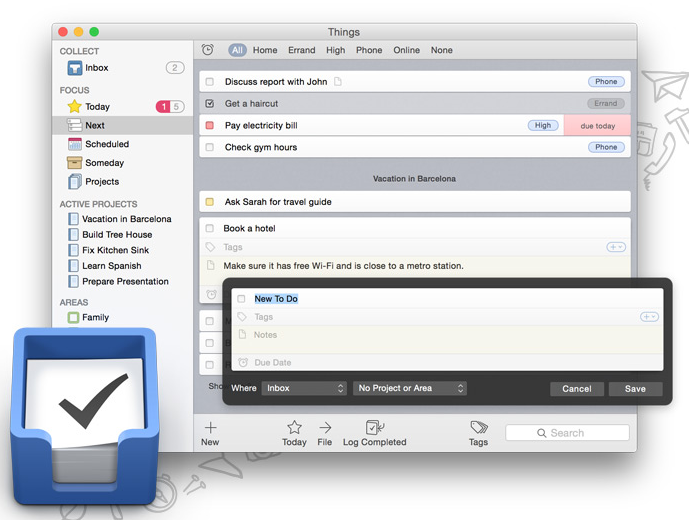

The states described here apply both to items in the inbox and actions within projects.

Since the Inbox primarily serves as a temporary resting place for new tasks, it doesn’t support complexity beyond simple grouping to add hierarchical nuance to a task with many parts, consider assigning it to an existing project with the inspector. The Inbox contains a list of individual items that can be organized hierarchically into item groups. Once you’ve processed an Inbox item (added a project or tag, converted it to a project, or assigned it some other fate), it will likely disappear off to its new location. Many workflows use the Inbox as an initial point of entry, a transient receptacle for ideas big and small. To add an item to the Inbox from anywhere, click New Inbox Item in the toolbar. The Inbox is the catch-all perspective for depositing everything that you’d like to do. When in the Projects or Tags perspective, the bottom of the sidebar contains an Action Menu button for quick access to commands based on your current perspective. Tags, the places, people, things, and states of mind most relevant or conducive to accomplishing your tasks.įlagged, where tasks designated with the most important priority or visibility are gathered. Projects, where related tasks are grouped together into overarching plans and hierarchies. The Inbox, where you’ll stash all the tasks and to-dos that come to mind for later processing. By default this includes the following built-in perspectives: You can switch between perspectives using the tabs on the left side of the OmniFocus window. The function of the sidebar for each built-in perspective is discussed in the section for that perspective. The sidebar consists of perspective tabs for quick navigation between your perspectives, and (for perspective other than the Inbox) provides a high-level means for surveying what’s on your plate. Nestled on the left side of the OmniFocus window, next to the outline, lives the sidebar (click to show or hide it). The sidebar appears on left side of the OmniFocus window, and controls what is displayed in the outline. OmniFocus for the Web comes with four built-in perspectives that represent specialized, commonly-used view states specifically designed to help you organize, prioritize, and add context to your tasks. I then break down tasks into sub-tasks for the nitty-gritty stuff that's too small for Rally but for which I still want a reminder.All of your to-dos in OmniFocus live in a database behind the scenes, and perspectives are how you look at and interact with the contents of that database.


I try to include time estimates where appropriate.Īfter we finish our iteration planning, I modify the projects in the Backlog folder with any changes, then I drag those projects and tickets planned for the iteration into the Current Iteration folder. I also have a single-action list called Tickets into which go actions representing tickets I need to fix. When I break a project down, I put the resulting projects and tasks under the Backlog folder, in subfolders according to feature ("User Interface," etc.). Since I don't use OmniFocus for project planning, just for task management in the foreseeable future (which usually doesn't include next iteration), there's no need to have folders for every iteration in the release. I've organized my project folders at the top level according to my various roles under "Zenoss Developer" I have two folders, Current Iteration and Backlog. OmniFocus and Rally sync up surprisingly well, as far as that goes, but OmniFocus lets me take those extra steps to get myself an actual task list for the day and switch priorities on an hourly basis. Since I like OmniFocus for my own task management, I've developed a system that mirrors Rally at the highest level, but allows for much more versatility at a lower level (not, of course, restricted to Rally should function perfectly well for any Agile project). Great to get a high-level view of an iteration bad for any low-level organization. Its interface is unwieldy, and it doesn't allow for more or less fine-grained tasks. It's fine for planning the activities of the entire team, but as a personal task manager I find it pretty useless. The Zenoss dev team uses Rally for project management.


 0 kommentar(er)
0 kommentar(er)
